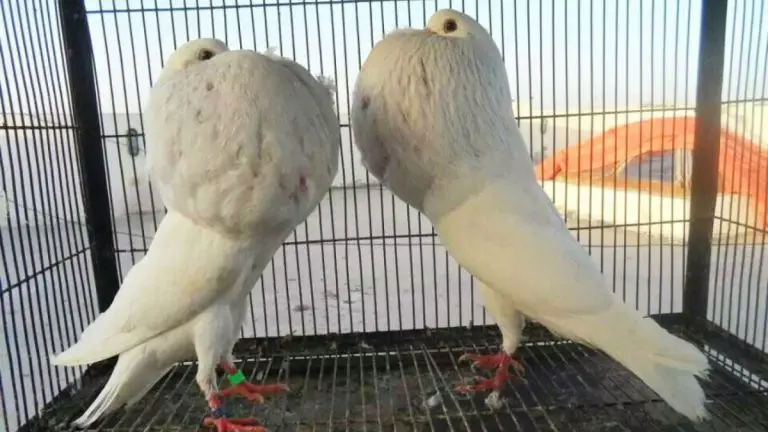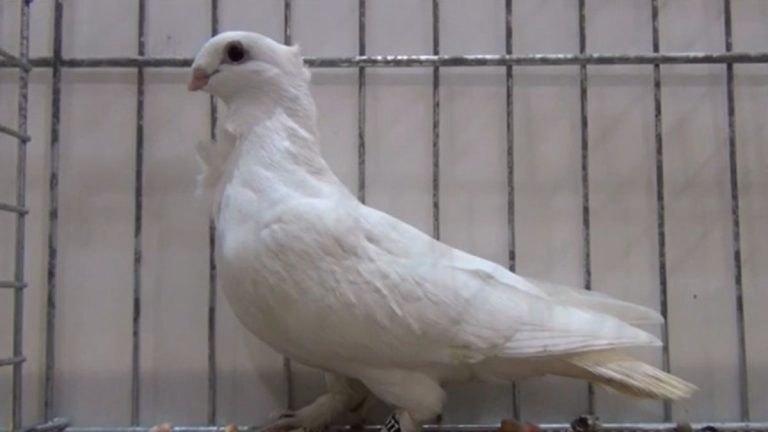Mourning Doves 101: Physical Characteristics, Habitat, Behavior, and Relationship with Humans
Mourning doves are birds of the dove family, Columbidae, found throughout North America. These birds boast unique physical features, such as plump bodies, a small head compared to the body, and long-pointed tails. In addition, they make distinct soft, mournful cooing calls.
But you know what? Like other doves, these species play a critical ecological role as seed dispersers. Therefore, studying them may also offer valuable insights into their behavior and feeding habits. That said, understanding the bird ecology of these doves is critical for their conservation due to the many threats they face.
Want to know more? Here is everything you need to know about these birds’ physical characteristics, habitat, and behavior. You will also discover about the dove-human relationship.
1. Physical Characteristics
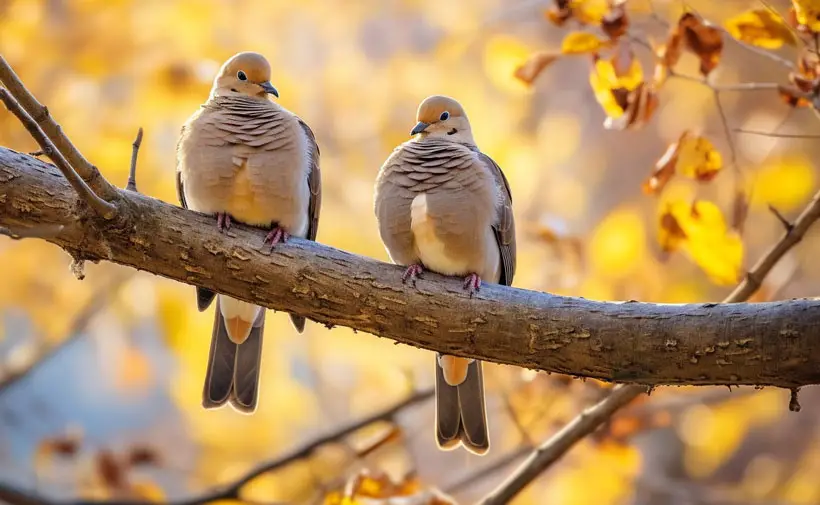
For ease of identification, we will discuss the various mourning dove physical characteristics that make them unique. They are as follows:
Pointed Tail
While in flight, you may notice this dove has a dark brown, long fan-shaped tail featuring larger white tips. The long tail is also pointed at the edge.
Feather Coloration
In addition, it boasts soft feathers that are muted brownish-gray in color, featuring a black spot on the neck area. It also has a black spot on the wings.
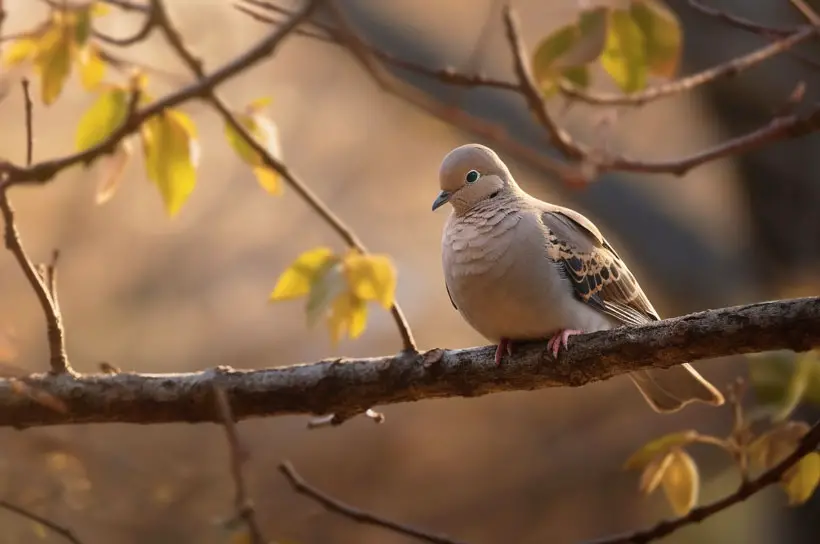
Eyes
Also known as the rain dove or American mourning dove, this bird features large brown eyes. Under each eye, there is a black spot. Its eyes are also surrounded by a unique blue circle of bare skin.
Size and Shape
This dove species measures between 9 and 13 inches long, while its wingspan ranges from 15 to 18 inches. In addition, it has a small head, short pink legs, and a small, dark beak compared to its overall body size.
Overview of Different Variations of Mourning Dove Species

There are 5 common variations of mourning dove species. These include
- The West Indian subspecies endemic to the Greater Antilles
- The Panamanian subspecies in Central America
- And the Eastern subspecies, primarily found in eastern North America, the Bahamas, and Bermuda
- Another variation is the Western subspecies in western North America, including some regions of Mexico.
- And lastly, there are the Clarion Island subspecies native to Clarion Island only, off Mexico’s Pacific coast.
Adaptations That Mourning Doves Have Evolved to Survive in Different Habitats and Climates
The American mourning dove has evolved various physical and behavioral adaptations, allowing them to survive in different environments. These dove habitats include:

Camouflage
Its brownish-gray feathers allow this bird to easily camouflage into its surroundings. This makes it difficult for their predators to spot them.
Diet
The diet of rain doves comprises primarily of seeds. Seeds are readily available in many environments, enabling their survival.
2. Habitat and Behavior
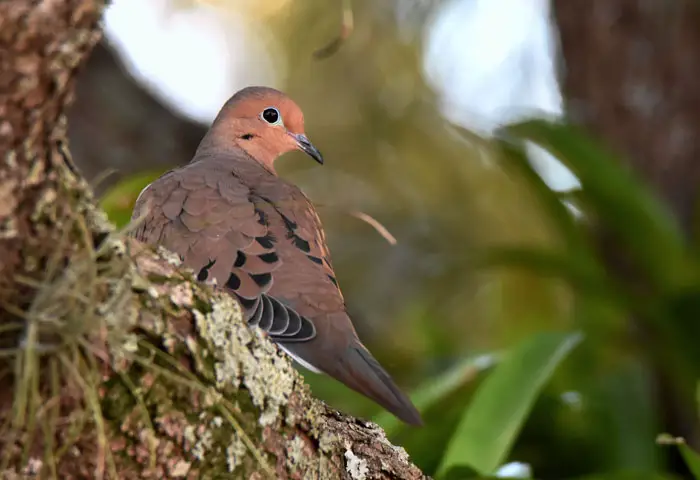
These dove species can be found in many open habitats throughout North and Central America. Examples are as follows:
Grasslands and Woodlands
The common mourning dove habitations are the grassland edges and woodlands. These include the prairies, savannas, coniferous, and deciduous forests.
Urban and Suburban Environments
The rain doves also inhabit urban and suburban environments. You will often spot them in gardens, parks, farms, and other green spaces in towns and cities.
Deserts
These birds are also adapted to living in arid environments. Therefore, you can find them in desert regions and scrublands because of their sparse vegetation.
Coastal Regions
The birds may also be found in coastal areas, especially along flat or shallowly sloping shorelines without vegetation. This mourning dove habitat provides them with access to drinking water.
Overview of Different Mourning Doves’ Behaviors
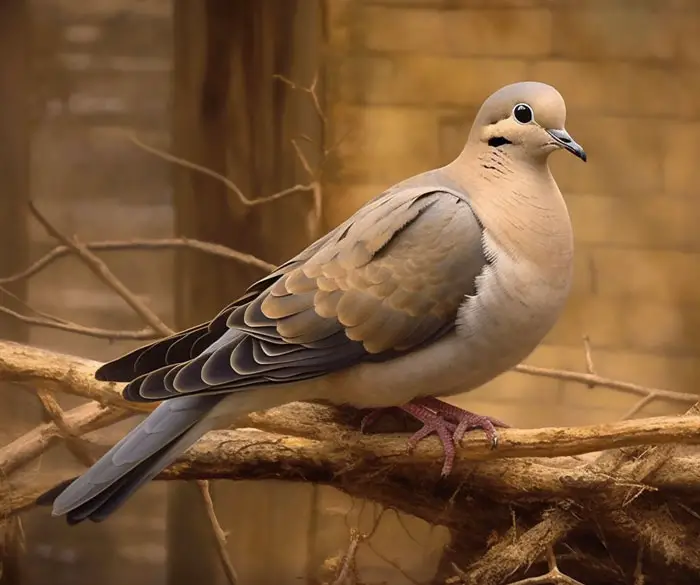
Like other bird species, these doves exhibit an array of behaviors that set them apart from other species. Here are the most notable dove behavior and habits.
Feeding Habits
These dove species are nearly 100% granivores. This means the dove diet comprises mainly seeds from wild grasses, grains, herbs, and weeds. Occasionally, they may eat snails and berry fruit.
The birds are known to forage on the ground, especially in open areas. Another mourning dove behavior is that the birds are often seen drinking water, mainly in the morning and evening after feeding.
Courtship Displays
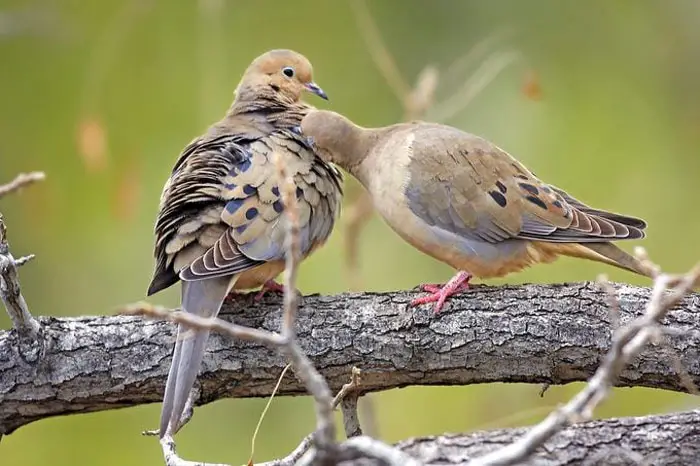
The male dove usually starts with a noisy flight or wing clapping, followed by a circular glide with the head down.
Other displays entail the male dove puffing up its chest, bobbing its head, and making loud calls. The cooing call is what the males use for communication during the breeding season. In addition, the birds may preen each other’s feathers or engage in courtship feeding.
Social Behavior
Like most bird species, these doves also exhibit social behavior primarily during courtship. Outside the breeding season, you will often spot them in small flocks.
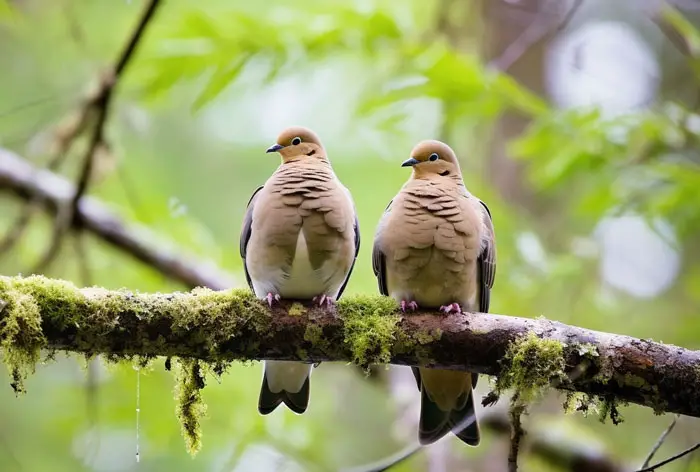
Nesting Habits
These birds usually build their nests on deciduous trees, conifers, shrubs, building ledges, or chimneys. They may also nest on the ground. Another noteworthy nesting behavior of these birds involves the male and female dove working together to build the nest.
Role of Mourning Doves in the Ecosystem and their Relationship with Other Bird Species
As granivores, these birds feed on many seeds and help disperse them widely. This helps disburse plant species more broadly. In addition, they are a food source for many predators, ensuring a natural balance in the ecosystem.
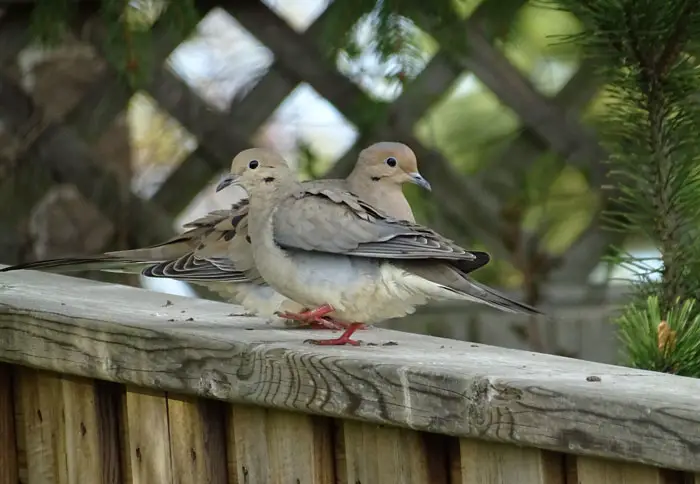
They also serve as indicators of environmental health. This is because any changes in their distribution or population could indicate changes in the ecosystem’s health.
Regarding their relationship with other bird species, rain doves compete with them for resources like nesting sites and food. Examples of these bird species are sparrows and quails.
For bird species like hawks and owls, they have a prey-predator relationship. Simply, these doves act as prey for these predators.
3. Relationship with Humans
The mourning dove-human relationship is quite complex but has evolved over time. Read on to learn how it works.
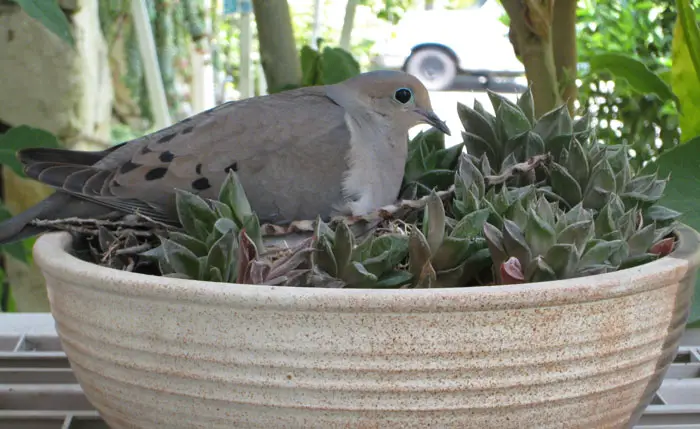
Cultural Significance
These doves hold cultural significance in several societies around the world. For example, in many cultures, the rain doves are viewed as symbols of peace, love, hope, and harmony. They are also seen as a symbol of mourning and grief because of the cooing sound.
Sport Hunting
As a popular game bird, rain doves are the most hunted migratory birds in North America. In fact, dove hunting is a sport commonly practiced in many parts of the country.
Overview of the Various Ways Humans Interact with Mourning Doves
Because of their common sight in parks and residential areas, humans interact with rain doves in many ways, including sport hunting. However, the common one is backyard birding which involves spotting, identifying, and learning about these birds in the backyard.
Another way is feeding the doves. Some bird enthusiasts enjoy feeding these birds at the parks or in their backyards. They also interact with each other through conservation efforts aimed at protecting their populations.
Potential Negative Impacts of Human Activity on Mourning Dove Populations
Human activities may negatively affect the populations of mourning dove species in several ways. These include:
Habitat Loss
Agriculture, urbanization, and other activities may destroy the natural habitation of these birds, reducing their foraging and nesting sites. And when this happens, their reproduction success may reduce. This explains the importance of habitat conservation.
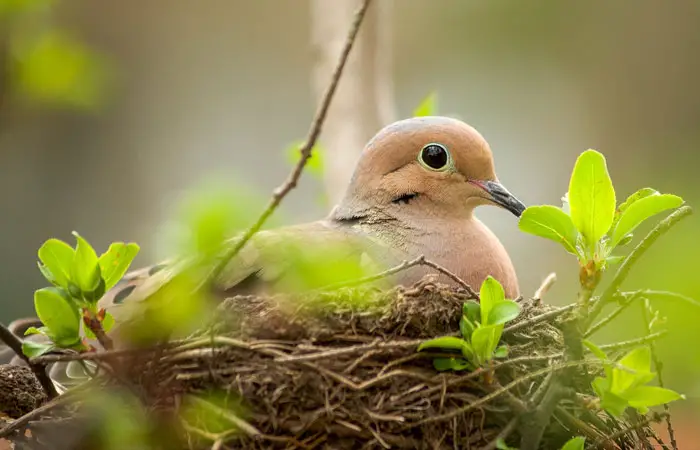
Hunting
Hunting of these birds is legal in at least 41 states in the U.S. Unfortunately, overhunting rain doves may lead to population declines.
Climate Changes
Climate changes caused by human activities, such as deforestation, may also affect these birds’ populations. Generally, changes in weather conditions may impact food availability and even alter their migratory patterns.
Overview of the Various Conservation Efforts in Place To Protect Mourning Dove Populations and their Habitats
To start with, there are already hunting regulations in place in various states like South Dakota to prevent overhunting. These include restricted shooting hours, daily bird limitations, and restricted hunting areas.
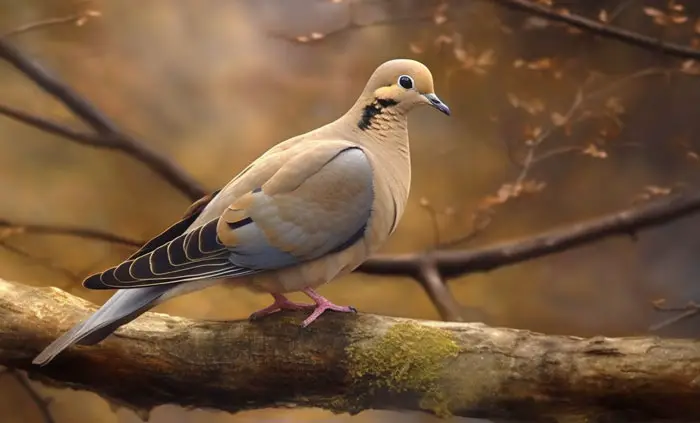
Other conservation efforts include habitat restoration by bird conservation organizations. These include managing agricultural practices, restoring wetlands, and planting native vegetation. This is to ensure these birds have secure nesting sites.
Additionally, research institutions continue to study these birds’ behavior, habitat, and population trends. This information is used to inform conservation efforts.
4. Interesting Facts
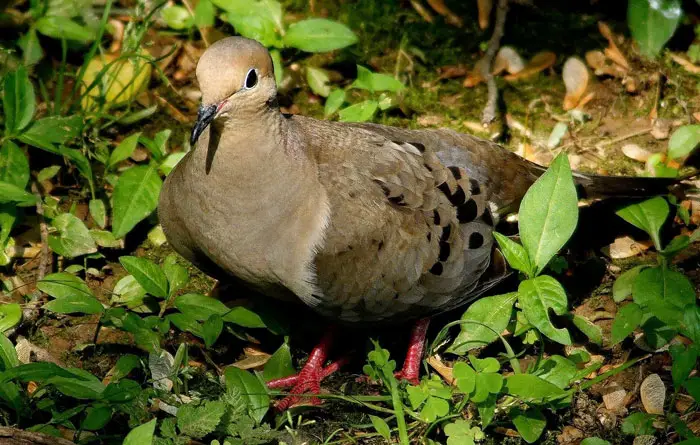
Below is a list of little-known but interesting facts about mourning doves. Check them out.
- These doves reuse the same nest multiple times during the nesting period, adding new materials sometimes for reinforcement
- Rain doves don’t drink water while tilting their heads back. Instead, they suck the water up like a straw
- These doves usually produce crop milk to feed their young ones
- The doves make whistling noises with their wings during takeoff or landing to warn flock mates of potential threats
- They can drink brackish spring water without becoming dehydrated, yet most mammals, including humans, cannot
Conclusion
Mourning or rain doves come in many variations or subspecies with unique physical characteristics like long, pointed tails. The birds also boast different habitations and behaviors. Their typical bird behavior includes courtship displays and feeding habits.
In addition, they have a unique relationship with humans. Although these birds are very abundant, they do face many threats. This is why there is a need for continued conservation and education efforts to protect their populations and habitations. That said, people need to read and learn more about these dove species and their role in the ecosystem.


